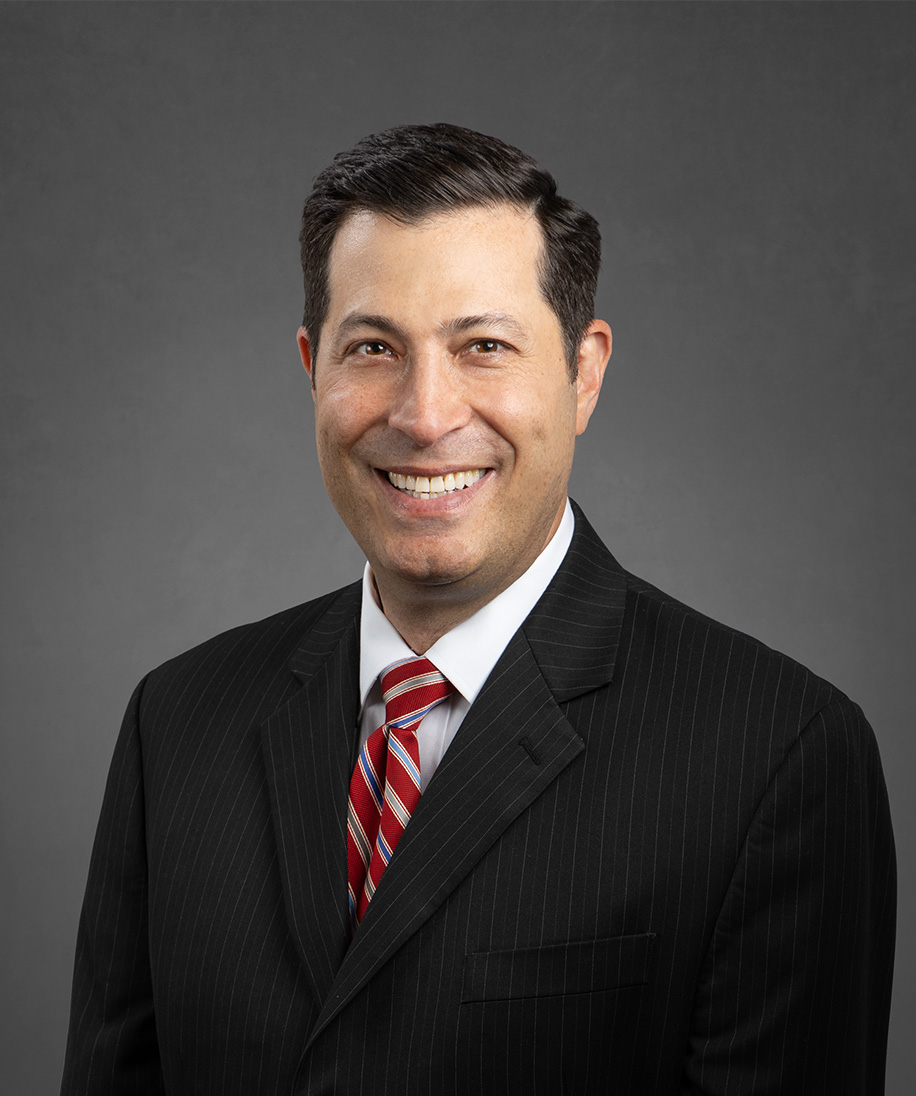Client Alert
New York City Issues Sweeping New Guidance Regarding Gender Identity and Expression Discrimination
January 08, 2016
By Stephen Sonnenberg & Sara Tomezsko
In late December 2015, the New York City Commission on Human Rights (“Commission”), which is charged with enforcing the New York City Human Rights Law (“NYCHRL”), issued a Legal Enforcement Guidance (“Guidance”) to address discrimination against individuals on the basis of their gender identity and expression. Describing such discrimination as “frequent and severe” and “very often a matter of life and death,” the Guidance addresses a number of workplace concerns, including single-sex bathrooms, use of preferred pronouns, dress codes, and employee benefits plans. The New York City Council passed a Transgender Rights Bill in 2002 to expand the scope of gender-based protections guaranteed under the NYCHRL. This Guidance, however, is the Commission’s most comprehensive published statement to date addressing transgender employee rights and employer responsibilities. Employers nationwide with operations in New York City should promptly familiarize themselves with the Commission’s Guidance.
The NYCHRL has long protected transgender and gender non-conforming individuals, making it unlawful for employers to refuse to hire, promote or terminate an individual because of the person’s actual or perceived gender, including actual or perceived status as a transgender person. Without interpretive guidance from the Commission, some contours of the protection were unclear. The Guidance now instructs employers to adopt inclusive policies and practices unconstrained by traditional gender binaries and sex stereotyping, and to allow employees to self-identify, enjoy equal access to facilities and benefits, and be free from discrimination and harassment. The Guidance provides numerous examples of common unlawful discriminatory practices based on an individual’s actual or perceived transgender status, gender identity, gender expression, or gender non-conformity in housing, employment, and public spaces. The primary focus of the Guidance, however, is on employment.
The Guidance states that discrimination against individuals on the basis of their gender identity and expression includes harassment, which covers a broad range of conduct, and does not have to be sexual in nature. While the severity or pervasiveness of the harassment is relevant to damages, differential treatment based on gender (e.g., intentional or repeated refusal to use a transgender employee’s preferred name, pronoun or title) may be sufficient under the NYCHRL to constitute a claim of harassment. Indeed, the protections afforded employees under the NYCHRL are independent of protections afforded by federal or New York State law, which are merely a floor below which the NYCHRL cannot fall.[1]
Vocabulary Common to Transgender and Gender Non-Conformity Discourse
In an informal preamble, the Guidance provides a brief glossary of essential and often misunderstood terms associated with gender identity and expression, including “cisgender,” “intersex,” “gender expression,” and “transgender.” The definitions are intended to promote understanding of nuanced issues, including the distinction between gender identity (“one’s internal deeply-held sense of one’s gender which may be the same or different from one’s sex assigned at birth”), gender expression (“the representation of gender as expressed through, for example, one’s name, choice of pronouns, clothing, haircut, behavior, voice, or body characteristics”), and transgender (“an adjective used to describe someone whose gender identity or expression is not typically associated with the sex assigned at birth”).
Prohibited Activity and Best Practices to Avoid Liability Under the NYCHRL
The Guidance provides examples of conduct and practices that run afoul of the City Council’s intent to combat the “profoundly debilitating impact of gender-based discrimination on transgender and other gender non-conforming individuals.” A non-exhaustive list highlights several practices that constitute gender-based discrimination and provides illustrative examples of violations.
Intentionally Failing to Use the Employee’s Preferred Name or Pronoun
The Guidance states that employees have the right to use their preferred name, pronoun and title, regardless of the individual’s name or sex assigned at birth, anatomy, gender, medical history, appearance, or the name or sex indicated on the employee’s workplace or government identification. Employers are permitted and encouraged to ask all employees what their preferred gender pronoun is so that no one is singled out for such questions. Pronouns may include the gender neutral “ze/hir”[2] or “they/them/their,” the pronoun of preference for some transgender or gender non-conforming individuals. Once the employer has notice of the employee’s preferred name or pronoun, repeated or intentional use of the wrong name or pronoun may constitute discrimination or harassment under the NYCHRL.
Very limited exceptions mandated by federal, state or local law apply; for example, employers may still use the employee’s name assigned at birth to obtain an employee’s eligibility verification with the federal government. Otherwise, transgender or gender non-conforming employees may not be subject to heightened scrutiny to “prove” their gender identity. Employers must not condition the use of a preferred name or pronoun on the receipt of a court order demonstrating a name change, and cannot require proof of medical history or elective procedures before implementing the employee’s preference.
Refusing to Allow Individuals to Utilize Single-Sex Facilities Consistent with Their Gender
According to the Guidance, all employees have the right to use single-sex facilities, such as bathrooms or locker rooms, consistent with their gender identity or expression. The NYCHRL does not require employers to make all existing facilities all-gender, nor does it require employers to construct single-use facilities where none exist, although employers are not prohibited from doing so. Instead, the Guidance focuses on making existing accommodations more inclusive.
Workplaces with single-occupancy bathrooms, for example, should afford equal access to employees of all genders, but employers may not require transgender or gender non-conforming individuals to use the single-occupancy facility. For multi-occupant facilities, employers should allow employees access consistent with their gender identity or expression, and may not force employees to use either the men’s or women’s facility based on sex stereotypes, appearance, or the employee’s gender assigned at birth. Objections by employees or customers to sharing a facility with a transgender or gender non-conforming person are not a lawful reason to deny access to that individual, according to the Guidance. Employers may, however, adopt policies or codes of conduct for single-sex facilities delineating acceptable behavior for the use of the facilities that do not single out transgender or gender non-conforming people.
The Commission suggests that employers may avoid violations of the NYCHRL by providing single-occupancy restrooms and providing space with multi-user facilities for anyone who has privacy concerns. The Guidance encourages employers to promote inclusivity by posting signs in all single-sex facilities stating that “Under New York City Law, all individuals have the right to use the single-sex facilities consistent with their gender identity or expression.”
Maintaining Grooming Standards, Dress Code Policies, or Uniforms that Differentiate Based on Sex or Gender
Under the NYCHRL, employers may not impose dress codes, grooming standards or uniform requirements that differ based on an employee’s sex or gender. The Commission explains:
When an individual is treated differently because of their gender and required to conform to a specific standard assigned to their gender, that is gender discrimination regardless of intent, and that is not permissible under the NYCHRL.
The NYCHRL, in this respect, does not follow federal law, which generally permits differing standards based on sex or gender so long as they do not impose an undue burden, an evidentiary standard that the employee must satisfy. There is no such requirement under the NYCHRL. Rather, the Guidance states that the fact that a grooming standard or dress code differentiates based on gender is sufficient for it to be considered discriminatory, even if some perceive the differentiation to be harmless. Under the NYCHRL, the following practices may be found to be violations:
Requiring different uniforms for men and women;
Requiring employees of one gender to wear a uniform specific to that gender;
Requiring individuals who identify as male to have short hair and allowing only individuals who identify as female to wear jewelry.
The Guidance explains that employers may still enforce dress codes or require specific grooming standards, provided that the policies are universally applied. For example, a restaurant may require all servers to have long hair tied back in a ponytail or away from the face, as long as the policy is applied to servers regardless of gender. Employers may continue to provide uniforms tailored to traditional male or female styles of dress, but may not require employees to wear one style over the other.
Failing to Provide Compliant Employee Benefit Plans
It is unlawful under the NYCHRL for an employer to provide health benefits plans that deny or exclude services on the basis of gender, or to offer benefits only to opposite-sex couples. The Guidance explains that employers also violate the law by failing to provide “necessary, effective and even life-saving” benefits to transgender and gender non-conforming employees. Employers who offer health benefit plans not covered by ERISA must ensure that coverage includes transgender, transition-related, or gender-affirming care. Transgender care includes, for example, hormone replacement therapy, voice training, or surgery. Other examples of transgender care coverage are available at World Professional Association for Transgender Health.
ERISA preempts the application of the NYCHRL, and plans that comply with ERISA and applicable federal anti-discrimination requirements automatically comply with the NYCHRL.[3] In short, if an insurer denies coverage of a particular expense or procedure under an ERISA-compliant plan, employers should not be vulnerable to a gender discrimination claim under the NYCHRL if they otherwise comply with federal anti-discrimination laws.
Considering Gender When Evaluating Requests for Accommodations
When evaluating an employee’s request for an accommodation for a disability, or time off for a medical reason, employers may not consider gender. Leave or health care requests related to an individual’s gender identity or gender transition should be treated no differently than requests related to all other medical conditions. Accommodations may include medical leave for counseling appointments, recovery from gender affirming procedures, surgeries, and treatments, as well as personal leave and schedule changes. Requesting medical documentation to verify leave time from transgender employees only is impermissible.
No Retaliation
Retaliation against an individual for opposing discrimination or requesting a reasonable accommodation for a disability based on gender identity or expression is prohibited. The Guidance explains that action taken against an individual that is reasonably likely to deter them from engaging in protected activity is unlawful retaliation even if the action is neither final nor a materially adverse change to the terms and conditions of employment.
Discomfort with Compliance Is No Excuse
The Commission takes the position that discomfort experienced by co-workers, clients, customers or patrons does not excuse an employer from compliance with the NYCHRL. Employers may not deny equal access to single-sex facilities, for example, because other employees or customers object or express their discomfort. Similarly, employers may not impose dress policies that conform to traditional sex stereotypes in order to cater to the preferences of their clients or customers.
What is the Reach of the NYCHRL Protections?
A common issue employers defending NYCHRL claims face is the extent and reach of the NYCHRL’s protections. The NYCHRL covers individuals who live and work within New York City.[4] For everyone else, the application of the NYCHRL is determined by an “impact test” that considers whether the impact of the discriminatory action was felt or experienced within NYC.[5]
Enforcement
Aggrieved employees have two options:
They may file a complaint with the Commission’s Law Enforcement Bureau within one year of the discriminatory act. The Commission may assess up to $125,000 in civil penalties for violations, and up to $250,000 in the event of willful, wanton or malicious conduct. These penalties are in addition to other remedies available under the NYCHRL such as back and front pay, and uncapped compensatory damages. The Commission may also order reinstatement of a terminated employee and require employers to extend “full, equal and unsegregated accommodations, advantages, facilities and privileges” to aggrieved employees.[6]
They may initiate suit in New York State Supreme Court within three years of the discriminatory act and seek back and front pay, compensatory and punitive damages, and attorneys’ fees.
What Should Employers Do?
The New Year is an opportune time to review policies and handbooks to ensure that they include appropriate references to gender expression and identity in statements regarding discrimination and harassment. In addition, employers should consider these steps:
Alert managerial employees to the protections afforded to employees regarding their gender identity and expression;
Review during employee harassment and non-discrimination training the types of gender-based statements and conduct that may be offensive to others, including transgender individuals;
Remind all employees to respect their co-workers’ preferences regarding the use of pronouns and the manner in which they ask to be addressed;
Review and revise dress codes and grooming standards to ensure they are gender-neutral;
Consider how the company will respond to an employee’s inquiry regarding the use of single-sex facilities consistent with their gender identity or expression, or to comments by co-workers about such use;
Review with human resources and managerial employees internal procedures to ensure that all requests for accommodations, including ones related to an individual’s gender identity, are considered in a gender-neutral manner;
Review benefits coverage to ensure that transgender and gender nonconforming individuals are receiving coverage as required under the NYCHRL.
***
[1] As of the date of this publication, there are no published decisions interpreting the level of deference a court must afford the legal enforcement guidance published by the Commission.
[2] “Ze” may substitute for traditional nominative pronouns, while “hir” may be used as an objective or possessive pronoun or as a possessive adjective. Examples of correct usage are as follows: Ze is taking care of it. I called hir. Hir work is excellent. That book is hirs. Ze likes hirself.
[3] See N.Y.C. Admin. Code § 8-107(e)(i).
[4] Fried v. LVI Servs., Inc., 500 F. App'x 39, 42 (2d Cir. 2012); Hoffman v. Parade Publications, 15 N.Y.3d 285, 289 (2010). Whether an individual “works” in the City depends on the totality of the circumstances and the extent of the individual’s contacts with the city. Case law demonstrates the factually intensive nature of this inquiry.
[5] Hardwick v. Auriemma, 116 A.D.3d 465, 467 (1st Dep’t 2014) leave to appeal denied, 23 N.Y.3d 908 (2014) (“[I]t is the place where the impact of the alleged discriminatory conduct is felt that controls whether the Human Rights Laws apply, not where the decision is made (see Hoffman v. Parade Publs., 15 N.Y.3d at 290–292, 907 N.Y.S.2d 145, 933 N.E.2d 744; Robles v. Cox and Co., Inc., 841 F.Supp.2d at 623–624).”). At least one case suggests that a NYC resident who works outside the City may not assert claims under the NYCHRL if the impact of the discriminatory conduct is experienced outside the City limits. Robles, 841 F. Supp. 2d at 622–25 (E.D.N.Y. 2012) (dismissing NYCHRL age discrimination claims of NYC-resident plaintiff who worked for corporation in Plainview, New York).
[6] N.Y.C. Admin. Code § 8-120(a)(5).
Contributors



Practice Areas
For More Information


